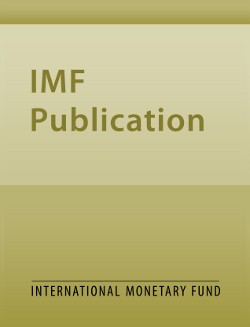
Public Investment, Growth, and Debt Sustainability: Putting together the Pieces
Can Policies Affect Employment Intensity of Growth? A Cross-Country Analysis
READ MORE...
Volume/Issue:
Volume 2012
Issue 144
Publication date: June 2012
ISBN: 9781475504071
$20.00
Add to Cart by clicking price of the language and format you'd like to purchase
Available Languages and Formats
| English |
Prices in red indicate formats that are not yet available but are forthcoming.
Topics covered in this book
This title contains information about the following subjects.
Click on a subject if you would like to see other titles with the same subjects.
Exports and Imports , Public Finance , WP , risk premium , Public Investment , Growth , Debt Sustainability , Fiscal Policy , Infrastructure , Aid , crowding in , real GDP , investment surge , rate of return , private sector , crowding out , capital stock , scaling-up scenario , growth linkage , Public investment and public-private partnerships (PPP) , Public investment spending , Africa , Global , Sub-Saharan Africa
Summary
We develop a model to study the macroeconomic effects of public investment surges in low-income countries, making explicit: (i) the investment-growth linkages; (ii) public external and domestic debt accumulation; (iii) the fiscal policy reactions necessary to ensure debt-sustainability; and (iv) the macroeconomic adjustment required to ensure internal and external balance. Well-executed high-yielding public investment programs can substantially raise output and consumption and be self-financing in the long run. However, even if the long run looks good, transition problems can be formidable when concessional financing does not cover the full cost of the investment program. Covering the resulting gap with tax increases or spending cuts requires sharp macroeconomic adjustments, crowding out private investment and consumption and delaying the growth benefits of public investment. Covering the gap with domestic borrowing market is not helpful either: higher domestic rates increase the financing challenge and private investment and consumption are still crowded out. Supplementing with external commercial borrowing, on the other hand, can smooth these difficult adjustments, reconciling the scaling up with feasibility constraints on increases in tax rates. But the strategy may be also risky. With poor execution, sluggish fiscal policy reactions, or persistent negative exogenous shocks, this strategy can easily lead to unsustainable public debt dynamics. Front-loaded investment programs and weak structural conditions (such as low returns to public capital and poor execution of investments) make the fiscal adjustment more challenging and the risks greater.



